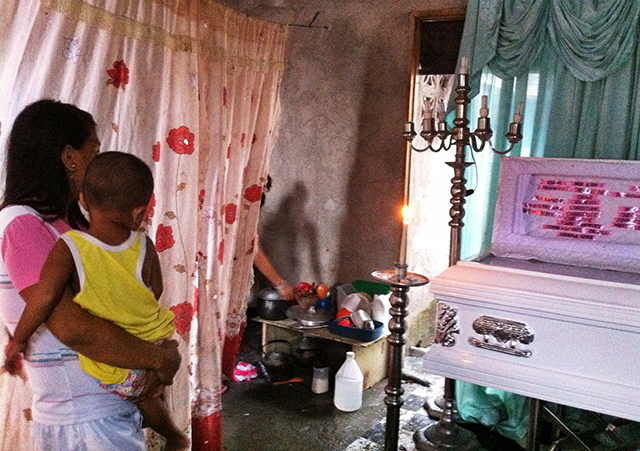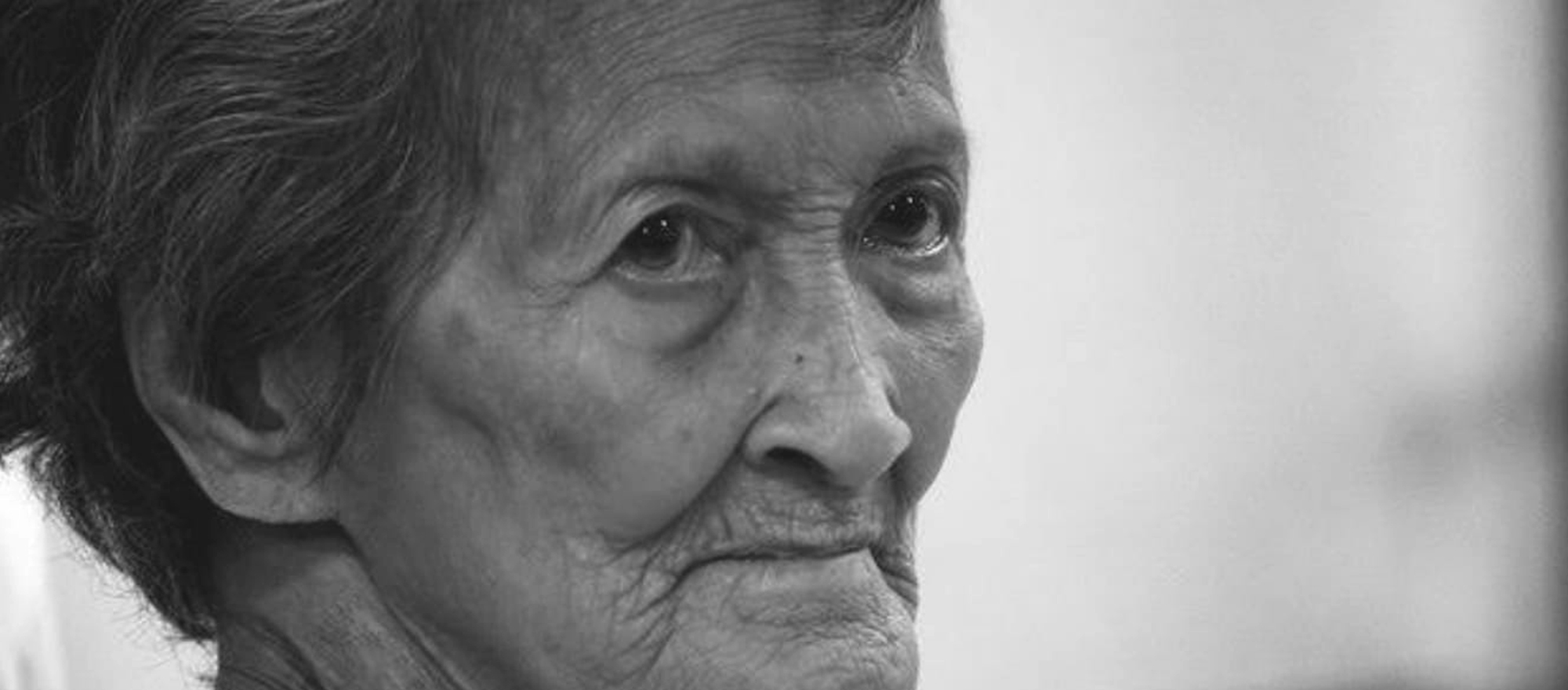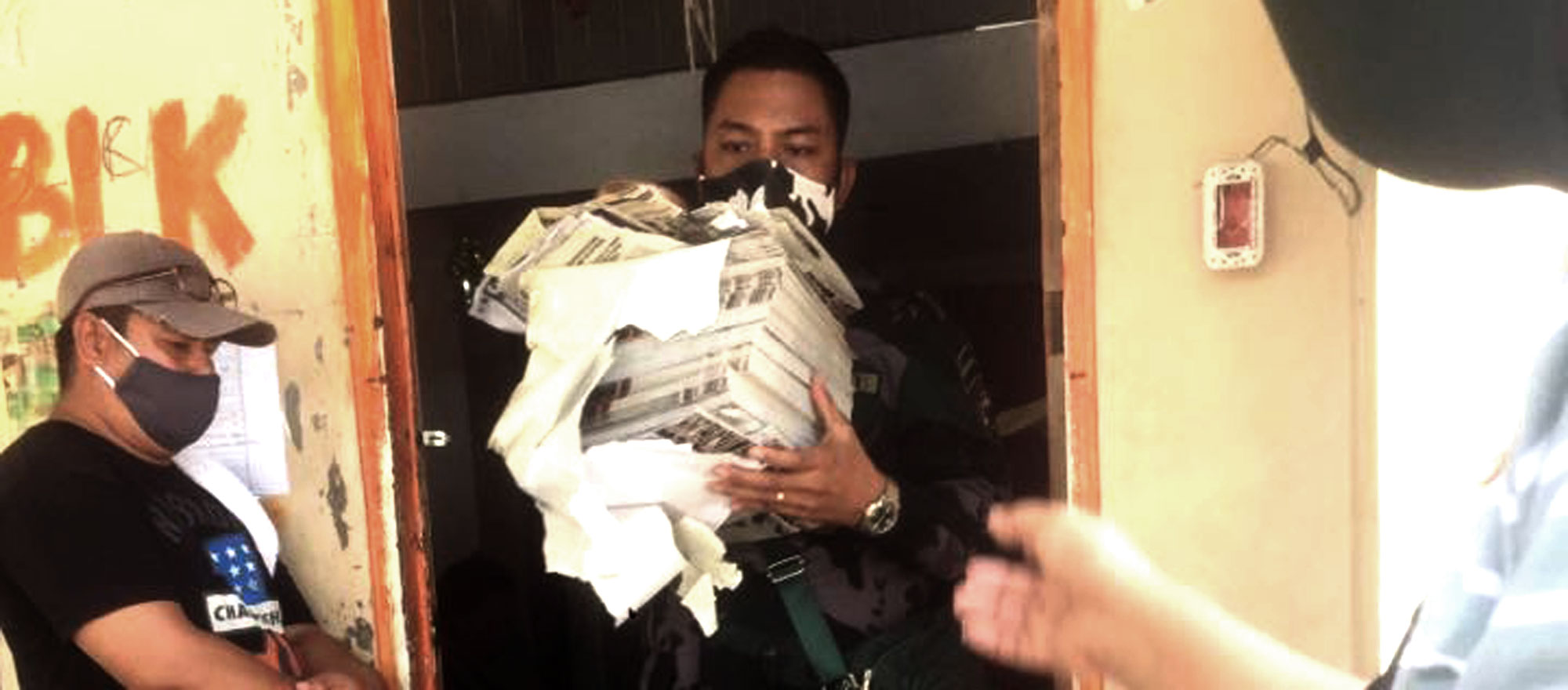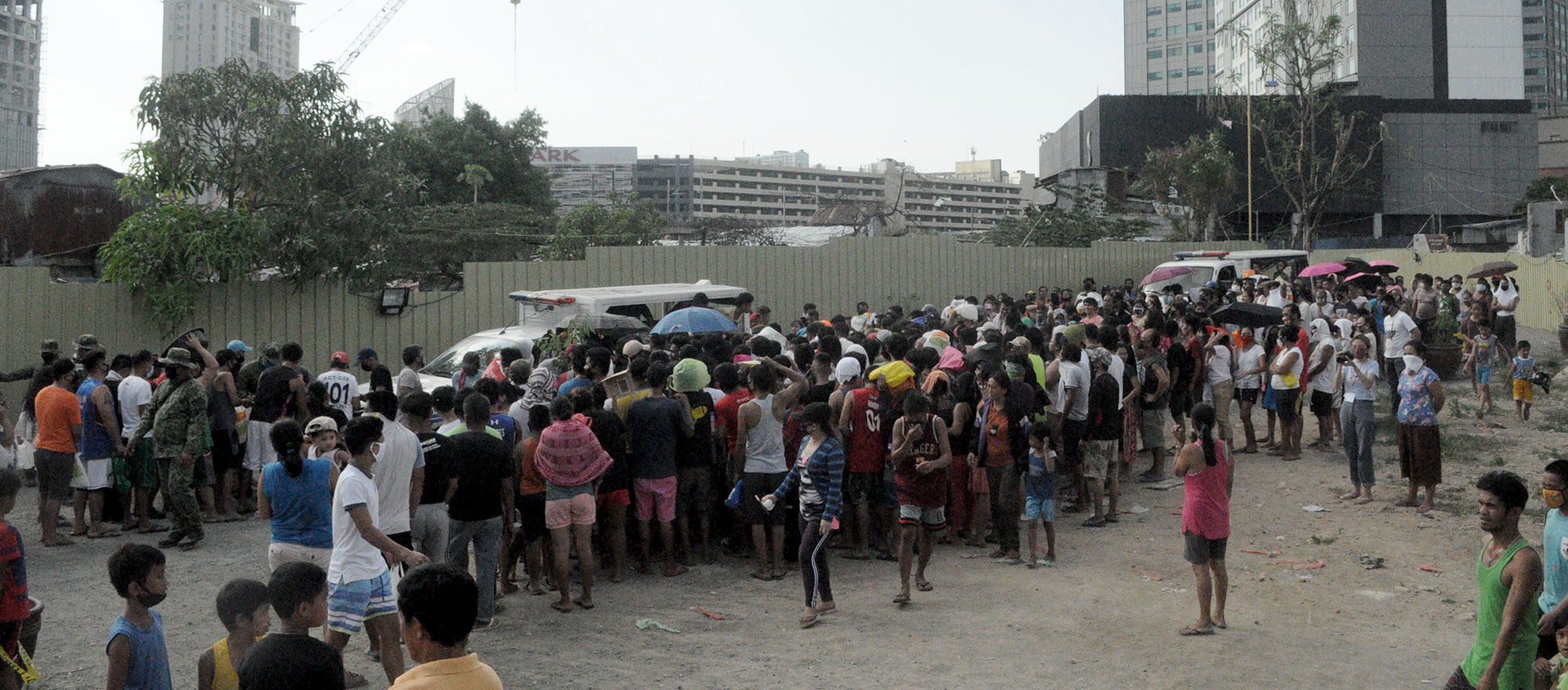Alleged ‘death squad’ roams freely in relocation site
The house that was peppered with bullets barely two weeks ago did not even have any police tape to indicate a crime. Only a thin plastic sheet covered the window from where two masked men aboard a motorcycle fired eight shots from a .45 caliber gun at around 11:00 a.m. on July 10, killing Nathaniel […]


The house that was peppered with bullets barely two weeks ago did not even have any police tape to indicate a crime. Only a thin plastic sheet covered the window from where two masked men aboard a motorcycle fired eight shots from a .45 caliber gun at around 11:00 a.m. on July 10, killing Nathaniel Bacolod, 19, Junmer Paraon, 22, and their 50-year old aunt Susan Mamaril.
They say that a person’s life is worth very little in Southville village, an off-city relocation site in Brgy. San Isidro, Montalban, Rizal, where thousands of urban poor families driven away from their homes in Metro Manila now live.
Junmer and Nathaniel were members of the urban poor group Kadamay (Kalipunan ng Damayang Mahihirap), while Susan was a local leader of the women’s group Gabriela. Two more of their kin, Roberto Moral, 20, and Pascualito Perlito, 21, were wounded in the incident.
Local police were quick to attribute the crime to a “fraternity war.” But residents say that the murders was not an isolated incident, but only one of the latest killings carried out by an alleged “death squad.”
According to Kadamay, they have monitored at least 32 killings in Southville since January 2014. Most of the individuals killed, mostly by masked men aboard motorcycles, were said to be involved in drugs, estafa, and petty quarrels with neighbors.
Indications point to a local death squad similar in nature to those that operate in Davao and Tagum cities—one that arrogates power unto itself as judge, jury, and executioner.
Hard life in relocation
Early morning of July 11, only a day after the killings of Nathaniel, Junmer, and Susan, another two individuals—Armando Calag, 35, and Marietta Bilabis, 43—were gunned down by motorcycle-riding men a few blocks away. The perpetrators again used a .45 caliber gun.
“Sabi nila, ‘yun din ang baril na ginamit sa pagpatay doon sa tatlo. (They say that the gun used to kill my mother was the same one used to killed the three the previous day),” said Sheila*, one of Marietta’s close relatives present during the wake.
Marietta suffered nine gunshot wounds. Twelve days after her death, she has not yet been buried. Their neighbors and other kin are afraid to visit the wake. The family is still without funds for the burial. Marietta left behind 10 children, including small ones.

Life in off-city relocation sites like Southville is exceptionally hard—most jobs and source of livelihood are in Metro Manila, around an hour and a half away. Those who try to earn a living in Montalban do so as tricycle drivers and scavengers in the nearby dumpsite. Thus, many eventually turn to illegal and anti-social activities—such as reselling houses awarded by the National Housing Authority, or peddling illegal drugs.
Shiela said that Marietta was a reseller of houses, which many residents decide to sell because of lack of livelihood in the area. “Masaya na siya na kumikita ng P5,000 hanggang P10,000 para may maipakain sa pamilya (She is happy to be able to earn something and feed her family),” she said. She also admitted that Marietta may have been involved in peddling drugs—among the reasons why she may have been killed.
On the other hand, Maritess Bacolod, Nathaniel’s mother, said that her son was not involved in any illegal or anti-social activity. A fourth year high school student, Nathaniel was studying in his cousin’s house right before he was killed. He was known as a youth leader and a good basketball player. “Wala siyang kinabibilangan na fraternity (He was not involved in any fraternity),” his mother said said.
Nathaniel and her mother were among those who led the fight against demolition in their former homes in Brgy. Corazon de Jesus, San Juan City. Maritess is also the spokesperson of Kadamay-National Capital Region.
Maritess suspects that the same people who abducted his nephew, Michael Mamaril, were the same ones behind the killing of his son.
She narrated that last July 8, Michael was picked up by a heavily tinted van and brought to an unknown office. Here, he was interrogated by around 10 men, whom she believes to be armed “goons” of local government officials. Michael was presented with 20 alleged crimes that he was accused of, which he then denied. This, Maritess said, pissed off his interrogators, who told Michael things like “sumasagot ka pa” (you’re insolent) and “wala kang karapatang magsalita” (you have no right to speak).
Michael was with the victims when the shooting happened two days later, but he was able to escape. It is said that his mother Susan, Maritess’ sister, took the bullet intended for him.
Maritess nonetheless believes that the shooting was planned so that even her sister, son, and other kin who were not involved in any alleged crimes or mishaps would be killed as well.

Susan was known to be active in the struggle of Montalban relocatees for social services, particularly for electricity. Four years after Southville was constructed, relocatees still do not have their own electricity lines. Rather, they are being charged exorbitant electricity fees by the housing developer, Baque Development Corporation—the owners of which are wives of military officers, residents say.
“Hindi lang mga kriminal ang tinitira nila, kundi ang sinumang bumabangga sa awtoridad o ‘yung maingay sa erya (They target not just criminals, but anyone who dares to speak against authority),” said Maritess.
‘They do not deserve this’
Mario*, also a community leader, shares the views of the families’ victims on the existence of a death squad which, he said, possibly operates under the local government. “Kahit ang ibang barangay tanod dito may baril (Even some village watchmen carry guns),” he said.
During the interview, Mario pointed out several places where individuals have been killed or shot at—in a huge hut in the middle of the village, in the jeepney terminal—or where bodies have been dumped—in a bank by the river, for instance.
Mario also told about a group of motorcycle-riding armed men who roam around day or night, instilling fear among the community. These men, believed to be “goons” of the local government, are called by the residents as “Tom Riders,” after San Isidro village captain Dennis Hernandez who is nicknamed “Tomtom.”
“May nagsumbong sa akin na narinig daw niya ‘yung isang rider na nagsabi sa kanilang hepe doon sa barangay (hall), ‘Mayroon na naman tayong lilinisin.’ (A resident told me that he overheard a rider saying to their chief in the village hall, ‘We have a new target.’),” Mario narrated.
Meanwhile, the local police have not only failed to prosecute killers or keep the killings in check—they are also distrusted by the residents themselves.

Allegedly, police set up a checkpoint only a block away from the street where Nathaniel and the others were killed, but failed to respond to the crime. Marietta’s family is afraid to talk to them as well–“hindi mo alam kung kakampi ba sila o kalaban” (you don’t know if they are friend or foe), said Shiela. Maritess said that police investigators who visited her son’s wake suspiciously wore civilian clothes and didn’t have any identifying papers with them.
Mario believes that the rising number of killings in Southville cannot be swept under the rug as merely drug-related or petty acts of violence attributed to ordinary residents. Like Maritess and Shiela, he believes that persons of authority are involved in the alleged cleansing or gun-for-hire operations—who they are remains a mystery.
Mario has been harassed and threatened before—a couple of years ago, soldiers from the 16th Infantry Batallion kept visiting his house, demanding to know where the “rebels” are. He thus believes that the killings could easily escalate—or have already escalated—from targeting only so-called “criminals” to also include political activists who are fighting for the rights of relocatees.
“Sino lang ba ang makikinabang dito? Eh di yung mga nasa kapangyarihan, lalo kung wala namang napaparusahan, at laging takot ang mga tao, (Who stands to gain from this culture of fear and impunity? Only those in power),” he said.
Kadamay, meanwhile, calls on Jejomar Binay, chair of the Housing and Urban Development Coordinating Council, and the Commission on Human Rights to conduct an immediate investigation into the killings in Southville.
“Aside from the extreme poverty faced by relocatees—one of the reasons behind the rising crime rate—they are now also facing inhumane treatment, especially those who are involved in illegal and anti-social activities. Even they do not deserve this,” said Carlito Badion, Kadamay national secretary general.
*Not their real names. Identities were withheld for security considerations.



